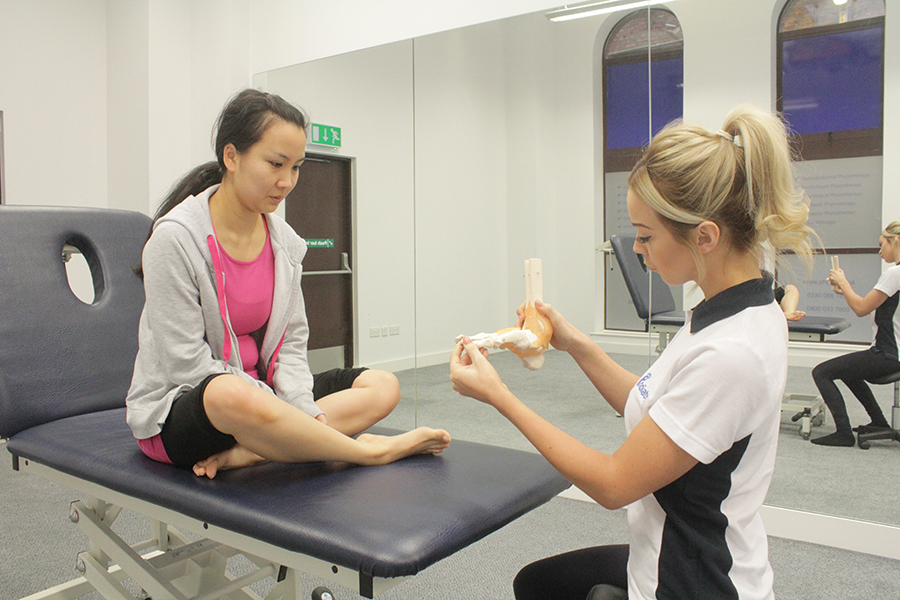Hallux rigidus
Hallux rigidus describes a condition in which there is no movement at the
big toe joint. Hallux rigidus is caused by arthritis.
Hallux rigidus can be painful, it also impairs function. As a result,
hallux rigidus prevents the big toe joint from functioning correctly when
walking.
If the big toe joint does not move (is stiff and rigid) you have hallux
rigidus, you may therefore find walking and other activities difficult.
What is hallux rigidus?
Hallux rigidus is used to describe an osteoarthritic change (a change in the bone) in the first metatarsophalangeal joint (the big toe joint). The word hallux refers to the big toe, and the word rigidus describes what is wrong; rigidus means 'rigid'.
What causes hallux rigidus?
Osteoarthritis is responsible for hallux rigidus. Osteoarthritis describes a condition in which the surface of the joint wears out, this means that there is break-down of cartilage. Cartilage is a smooth and slippery connective tissue that helps a joint to move easily. Without cartilage the joint will become stiff. A toe that has hallux rigidus will not move, therefore movement of the big toe joint is very restricted, this means that walking and other activities are impaired. The main causes of osteoarthritis in the big toe joint are:
- Injury
- Poor foot posture/poor biomechanics (the structure of the foot/how the foot moves)
- Systemic disease

What are the signs and symptoms of hallux rigidus?
The signs and symptoms of hallux rigidus include the following:
- Non movement of the big toe joint
- Pain at big toe joint
- Inflammation at the big toe joint
- A bony bump on top / outer rim of the joint (this is called an exostosis)
- Difficulty finding footwear to accommodate foot shape
If you are experiencing any of the above signs and symptoms, please visit Chiropody.co.uk for an assessment.
Benefit of podiatry for hallux rigidus
If you have hallux rigidus you can expect the following benefits once an
appropriate treatment plan has commenced:
- Reduction in pain
- Reduction in inflammation
- Increase in range of motion at big toe joint
- Improvement in foot function
- Appropriate referral (if necessary)
How is hallux rigidus diagnosed?
A podiatrist can identify and diagnose hallux rigidus. They will base their
diagnosis on a history, the physical signs and symptoms, and an examination
of the big toe joint.
What would podiatry for hallux rigidus involve?
A visit to Chiropody.co.uk always begins with a medical history. The medical history is then followed by an account of the problem. Your podiatrist will then examine the joint, observing its movement both standing and non-weight bearing. If a diagnosis of hallux rigidus is made your podiatrist will then discuss treatment options with you. The aim of treatment for hallux rigidus is to reduce pain, as well as to improve the function of the big toe joint so that everyday activities such as walking become easier. Treatment for hallux rigidus may include:
- Orthoses
- Joint mobilisation
- Advice and education
- Padding
- Footwear review
- Anti-inflammatory advice
- Surgery

Summary
Hallux rigidus describes a lack of movement at the big toe joint. Hallux
rigidus is the result of arthritic changes in the big toe joint.
Hallux rigidus can be painful, the condition can also inhibit the function
of the foot, making everyday activities such as walking very difficult. A
podiatrist at Chiropody.co.uk can help you if you have hallux rigidus.
To arrange an assessment with one our podiatrists please email office@chiropody.co.uk or call 0330 088 4222.
Save 5% by booking an appointment online.



We work with:

Individuals

Organisations

Health professionals
Get in Touch!
0330 088 4222
If you would like to speak to one of our specialists then please complete this form.
We are open 7 days a week








